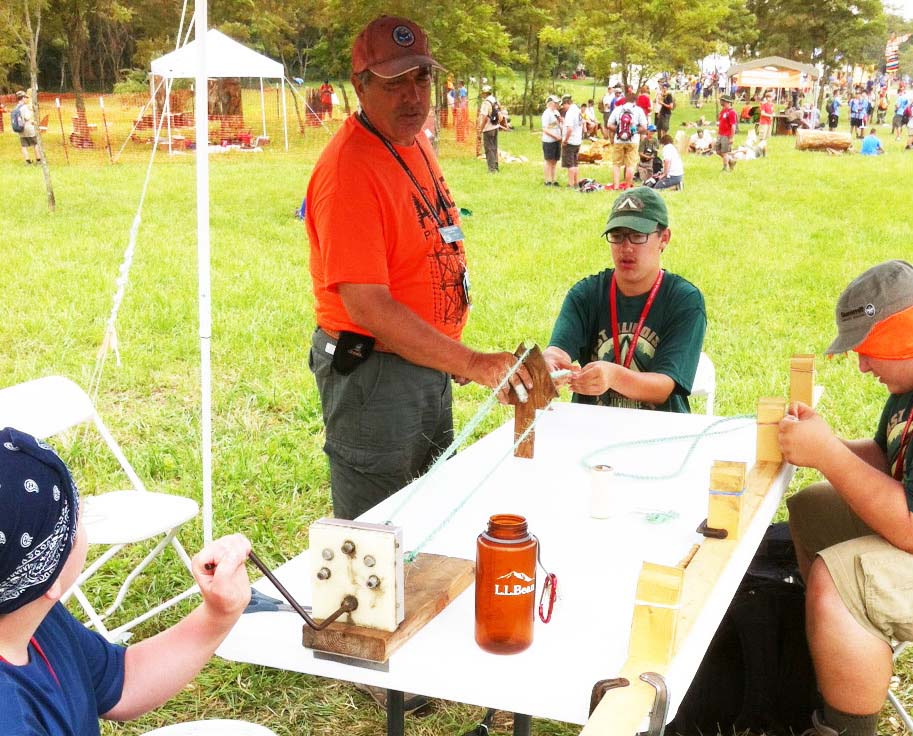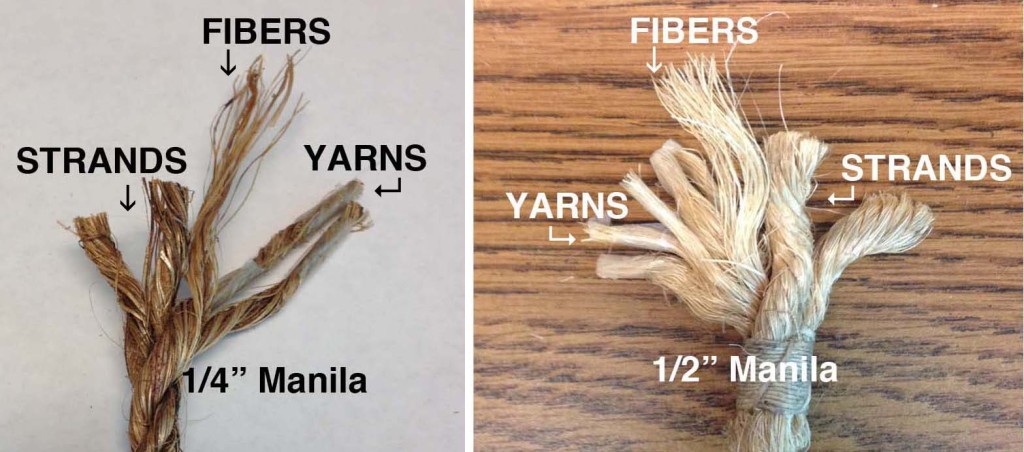For ages man has twisted natural fibers from plants to form cordage.
Throughout history, a variety of rope making devices and machines have been used to make rope. Here are instructions and designs for two types of machines:
Most all twisted rope is made up of three parts: fibers, yarns, and strands.
The basic process of making rope consists of twisting fibers to form yarns. Then yarns are twisted together to form strands. Finally, several strands are twisted to form the rope. For example, to make 1/4-inch diameter rope, we start with binder twine as the yarns. Three of these binder twine yarns are twisted to form a single strand. Then three strands are twisted to form rope approximately 1/4-inch in diameter.

You can make your own length of 1/4-inch diameter rope using simple binder twine. The twine itself is made up of separate fibers that have been twisted together and will serve as the yarns. These yarns can be twisted into strands, and the strands into rope. Here’s how you can very simply make a rope about 6 feet long:
- Cut a 60-foot length of binder twine and divide it into three 20-foot lengths.
- Attach each to a stick and twist these three 20-foot lengths together, clockwise, to form a strand.
- Take the long strand you made and fold it into three parts to make three shorter strands each about 7 feet long.
- Now twist these three strands together, counter clockwise. Whip both ends to keep it from unraveling.
